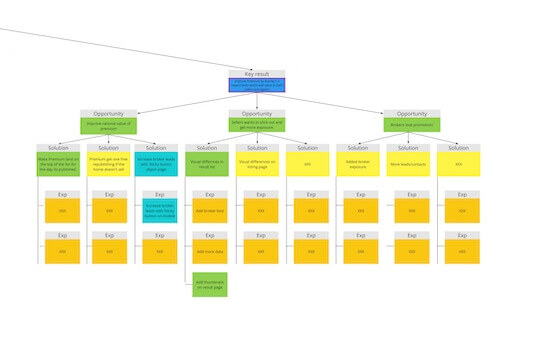You don’t necessarily need anyone’s permission to get started with continuous discovery. In fact, some steps—like story mapping and identifying your assumptions—don’t even require anyone else to participate. You can easily go through these activities on your own.
But at the same time, continuous discovery shouldn’t always be a solo activity. There’s a reason why Teresa often refers to the product trio: Continuous discovery is more effective when you avoid turf wars and bring in different perspectives.
Continuous discovery is more effective when you avoid turf wars and bring in different perspectives. – Tweet This
And while you technically don’t need permission to get started, at some point, you will need buy-in and support from your leadership. When leaders see the value in continuous discovery, they can help you define your outcome and carve out space for discovery activities. They’ll place more trust in you to pursue the opportunities and solutions you believe will have the most impact on your desired outcome.
So how do you walk that fine line between experimenting with continuous discovery and keeping your leaders informed and supportive? That’s the question we’ll explore in today’s Product in Practice. We spoke with User Research Director Niklas Fischerström and Chief Product Officer Francesca Cortesi to learn how they’ve worked together to roll out continuous discovery habits at Hemnet.
Do you have a Product in Practice you’d like to share? You can submit your story here.
Meet the Continuous Discovery Champions, Niklas and Francesca
If you’re from Sweden, you’re likely already familiar with Hemnet. But for everyone else out there, Hemnet is Sweden’s largest property portal and one of the top five most popular apps in the country.
Niklas Fischerström is the User Research Director at Hemnet. “My job is to make sure that our product teams have the tools (both software and know-how) and the processes that they need to deliver great products,” says Niklas. He divides his time between working within a specific product team that needs extra support and taking on more of an umbrella function alongside the UX Director outside of the product teams.
Francesca Cortesi has been the Chief Product Officer at Hemnet since 2019. “I have a mission of creating an organization that can execute on Hemnet’s vision and mission by creating value for all our customers in a way that supports business growth,” says Francesca.
Hemnet’s product teams are created around customer groups (consumers, sellers, real estate agents) and they also have supporting teams on a tech level (payments, platform, client platform). The product organization at Hemnet consists of ten people. In addition to Francesca, there are six product managers, one strategic partnership manager, one user research director (Niklas, who we’ve just met), and one UX director. “Both of the director roles have been really important in supporting our journey towards continuous discovery,” says Francesca.
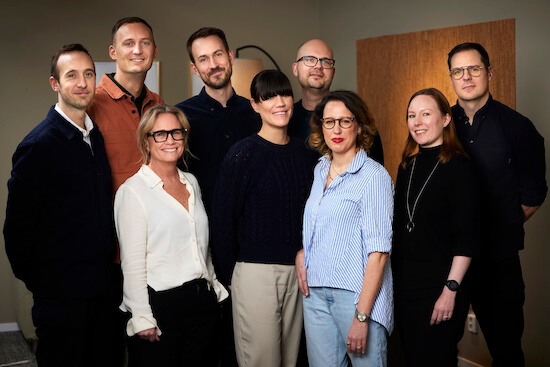
Meet the product team at Hemnet. From left, Product Manager Noa Åbyhammar Julin, Product Manager Henrik Agardh, Product Manager Hampus Meisner, Product Manager Michelle Rea, Product Manager Madeleine Ardby, UX Director Dan Kindeborg, CPO Francesca Cortesi, Strategic Partnership Manager, Aurora Ruuskanen, and User Research Director Niklas Fischerström. Not pictured here is Product Manager Kristoffer Jalve.
Taking the First Steps with Continuous Discovery
In the beginning of 2020, Niklas and a developer were discussing their frustration with working on solutions that they didn’t really believe fit their stated outcomes. While they had started working with OKRs a few years earlier, they felt there was a disconnect between their key results and the actual work they were doing. “We kept asking, ‘Why are we working on idea X instead of idea Y?’” says Niklas. “We felt like we were missing a good framework to connect solutions to our goals or outcomes.”
One of the ways Hemnet encourages learning is through an article club—like a book club, but focused on sharing and discussing articles, YouTube talks, and podcasts—and Niklas’s developer colleague had shared a talk by Teresa on the opportunity solution tree.
“After seeing it, we felt immediately that it could help us visualize the problem we had with connecting research with development,” says Niklas. “So we started from there. We took our key result we already had decided upon in our OKRs and built a tree from there. As a researcher, I already had a bunch of opportunities ready and the team then could help out with solutions. That’s how it started, and the first win was how we as a team could better motivate why we prioritized some solutions over others. Shortly thereafter we created a product trio and we were on our way.”
After seeing the opportunity solution tree, we felt immediately that it could help us visualize the problem we had with connecting research with development. – Tweet This
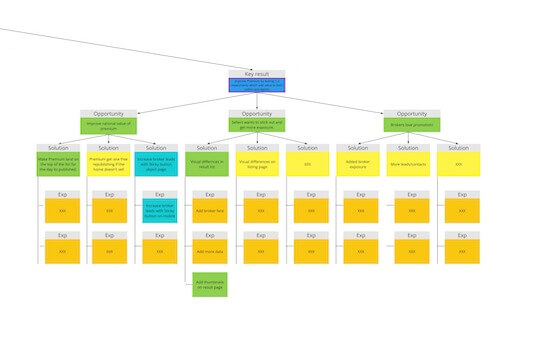
One of the first steps Niklas took was to build an opportunity solution tree based on the key result that was defined by their OKRs.
Why did Francesca feel comfortable allowing Niklas’s team to take these steps? She explains that as a leader, she’s always thinking in terms of risks. “That’s the first thing I think about whenever someone comes to me with an idea. If it’s not a big risk, you should always try it.” In this case, it felt like there was minimal risk because Niklas’s team was already talking with users and it was not the most prioritized area of the product at the time. “Even if we had completely failed, we would have only failed on that team; not in the entire company,” says Francesca.
Risk is the first thing I think about whenever someone comes to me with an idea. If it’s not a big risk, you should always try it. – Tweet This
At the same time, she considered what the product team had to gain. “A really important component is, ‘What do we think we’re going to gain in working this way?’” And the way Francesca saw it, continuous discovery itself had the potential to help get at better solutions faster: “Product discovery is a way to scale up the way you test ideas and mitigate the risk of building directly.”
The Next Phase: Scaling Continuous Discovery
After Niklas’s team began speaking with customers and using opportunity solution trees, they started to share what they were doing with other product teams at Hemnet, who were also excited to start doing continuous discovery.
But it wasn’t as simple as just rolling out the habits to every team. Francesca explains that while many people were interested, “It wasn’t necessarily their background to talk with users or do product discovery or to identify their assumptions and a user’s actual pain, not what they assumed was their pain.” This required support and education.
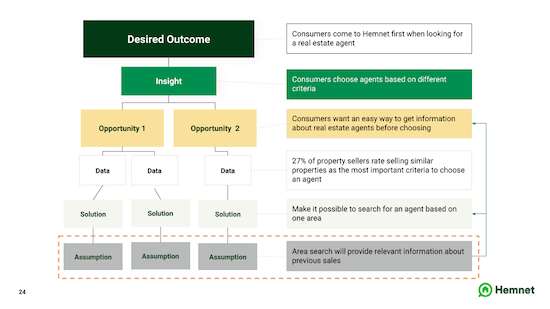
Identifying assumptions was a skill that took time to build at Hemnet since it was a new way of thinking for many members of the product team.
For example, product teams that didn’t have as much experience with continuous discovery needed to learn how to put their assumptions in their opportunity solution tree, how to schedule interviews, and how to rotate tasks so that everyone would get the chance to ask questions and take notes.
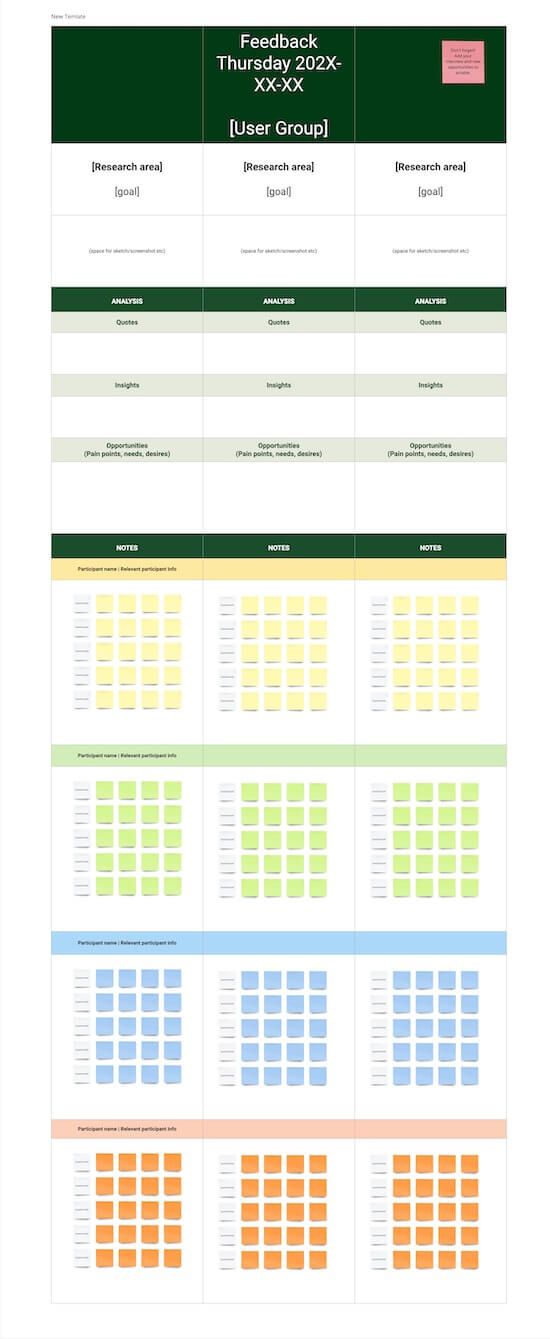
Providing support in the form of templates like this customer interview template made it easier for people who were new to discovery to take their first steps.
Francesca says having those with more experience help others was the key to their success: “In my experience, you can read a book, but you cannot expect people to go from book to reality with no support.” Plus, as a leader she knew it was important to give those teams the space and the support they needed to figure out how to make continuous discovery work for them.
In my experience, you can read a book, but you cannot expect people to go from book to reality with no support. – Tweet This
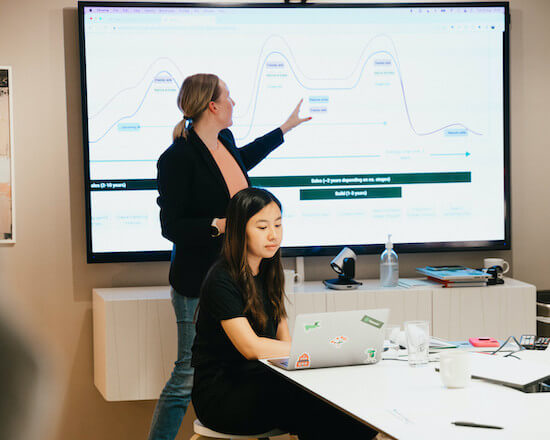
Aurora Ruuskanen, strategic partnership manager (standing), and Yichu Chung, UX, going through one of Hemnet’s partner’s user journeys in order to identify opportunities to work with.
From Niklas’s perspective, there were three things that accelerated continuous discovery at Hemnet:
- The first continuous discovery product team showed good results and got buy-in from their CPO (Francesca) to continue to spread this way of working.
- COVID struck and people quickly got used to remote meetings, which turbo-charged the amount of interviews they could do.
- Teresa released her book, which they made mandatory reading for all their UXers. (Niklas also notes that at Hemnet, UXers are expected to be researchers as well as designers, so it’s their job to drive the discovery work in the trio. It’s also up to them how much of the theory they want to use. Different teams started to experiment with methods from the book based on their own needs without Niklas or anybody else requesting them to).
So why did Francesca feel confident enough to give Niklas the green light to continue scaling continuous discovery? She says there were a few factors: Based on their initial discovery work, it was clear that they could iterate much faster, they were able to answer questions much faster, and they were forging much more effective cross-disciplinary relationships. “Having three or four different roles working together from the beginning actually creates something really strong,” says Francesca.
Key Learnings and Takeaways
Niklas shares a few observations of his continuous discovery journey so far. “First of all, I think the product trio is a genius concept and it really helps with both speed and clarity, which is great from a product manager’s perspective.” Niklas adds that the product managers at Hemnet believe product development is a team sport, so it has been a smooth transition to start trios in every team.
Niklas is also impressed by what’s possible with the opportunity solution tree: “The opportunity solution tree is a great visualization of both goals, insights, and possible solutions that is on its face super easy to explain.” He says that building an opportunity solution tree based on what they know today could easily persuade product managers to see the benefit of something that shows the whole picture instead of tickets in Jira or Trello. “We still use those tools for our developers during delivery, but they are not great at showing why we are building something.”
The opportunity solution tree is a great visualization of both goals, insights, and possible solutions that is on its face super easy to explain. – Tweet This
Another great learning according to Niklas was that they really started being “continuous” in their discovery work when they made it a routine to talk to users every other week. They started by branding it “Feedback Thursday,” and all UXers blocked meetings on the same day in their calendar. “We helped out with recruiting and taking notes on each other’s research. This was a great springboard to always talk to users and after a short while all teams were up and running with interviews and assumption tests every week,” says Niklas.
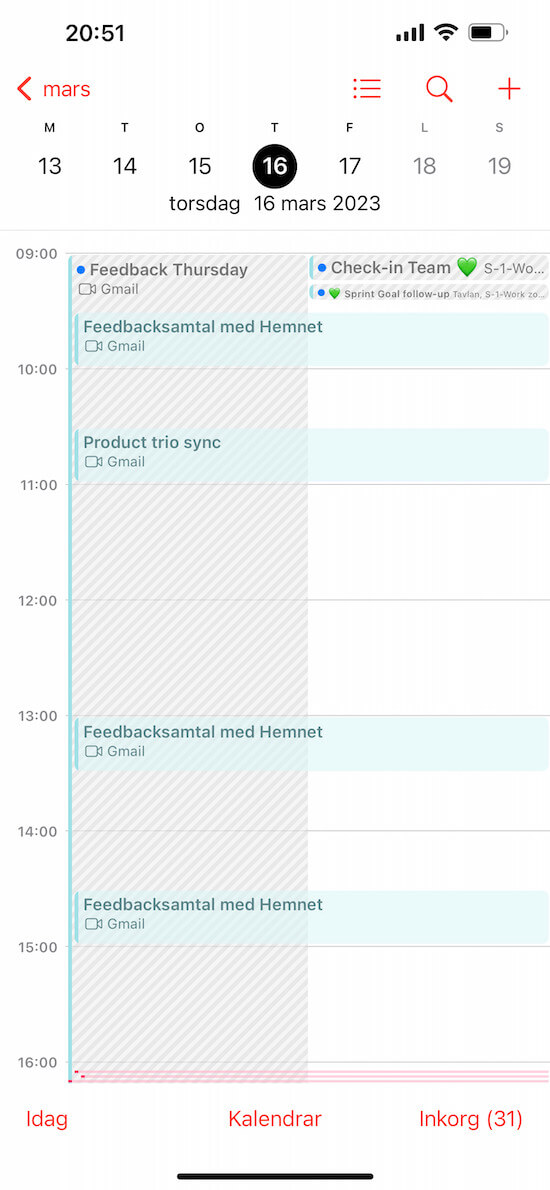
Creating a regular calendar event for “Feedback Thursday” was an effective way to promote continuous discovery.
Finally, Niklas adds that theory and practice are different, so you can’t always work “by the book” and follow a framework to the letter. “No framework will solve all your problems,” says Niklas. “For instance, I love the opportunity solution tree, but sometimes we’ve had long stretches where delivery has been on the forefront and we haven’t touched the OST. All of our teams work slightly differently with continuous discovery, but the overall process is there as our backbone. Since we share terminology and the general discovery process, we can easily share learnings and eventual improvements between the teams, which is beneficial for all.”
For other product leaders out there who are considering rolling out continuous discovery, Francesca says, “One of the biggest learnings for me in scaling continuous discovery to the entire organization is that it is wise to not do it at once. It was good to have one team starting so we built some trust in the process, and that other teams were inspired by it. This made it much easier to get buy-in from the rest of the organization.”
One of the biggest learnings for me in scaling continuous discovery to the entire organization is that it is wise to not do it at once. – Tweet This
And if you’re an individual contributor wondering how you can get your leaders bought in, Francesca shares the following advice: “In my experience, when you get a no, it’s because the risk feels like it’s too big. Either it’s completely off what the organization wants to achieve, or it’s deemed too risky or expensive, or it is something completely new and not proven yet.”
To increase your chances of getting a yes, Francesca says, “Try to take the very smallest step that you can. And even in that step, you can timebox it and really define what success is and what’s in it for your leader.” Try to clearly state what your organization will be gaining if the experiment works. “Many times when I talk to product managers or teams, they really see the value, but they’re not able to pitch what they’re going to bring to their organization. Make sure you always think about what’s in it for them; not only for you, and make it explicit.”
Are you looking for a community of like-minded peers where you can share your challenges and discover useful resources? Come join us in the Continuous Discovery Habits community!
The post Product in Practice: All It Took Was One Product Trio to Inspire Change—The Hemnet Story appeared first on Product Talk.
Product in Practice: All It Took Was One Product Trio to Inspire Change—The Hemnet Story was first posted on September 13, 2023 at 6:00 am.
©2022 “Product Talk“. Use of this feed is for personal non-commercial use only. If you are not reading this article in your feed reader, then the site is guilty of copyright infringement. Please let us know at support@producttalk.org.
